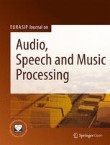Measurement Combination for Acoustic Source Localization in a Room Environment
The behavior of time delay estimation (TDE) is well understood and therefore attractive to apply in acoustic source localization (ASL). A time delay between microphones maps into a hyperbola. Furthermore, the ...
